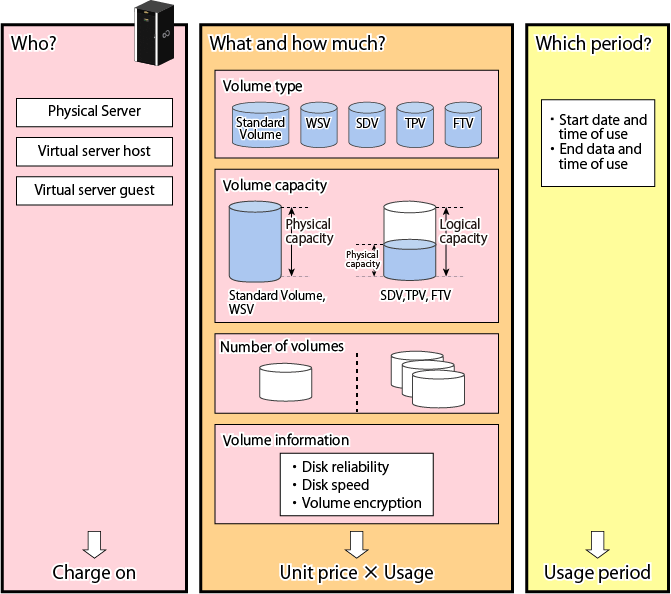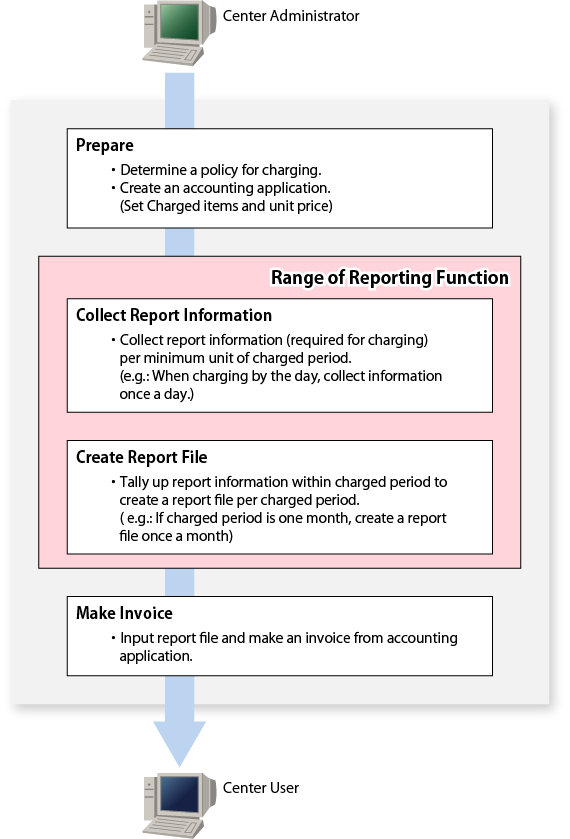The Reporting function collects the information associated with volumes connected to servers and outputs the information required for charging such as capacity information and usage time.
What Is Information Required for Charging?
To collect information required for charging, the following points should be made clear:
Who used it?
What and how much was used?
In which period was it used?

Information Collectable by Reporting Function
The information collectable by the Reporting function is as follows:
Information Collectable by Reporting Function | |
|---|---|
Unit of counting servers | Physical server |
Virtual server host | |
Volume type and capacity | Physical capacity of Standard Volume |
Physical capacity of WSV | |
Logical capacity of SDV | |
Logical capacity of TPV | |
Logical capacity of FTV | |
Usage period | Start date and time of use |
End date and time of use | |
Volume information | RAID level |
Disk type: | |
Volume encryption | |
Information
The following information cannot be collected by the Reporting function:
Virtual server guest
Physical capacity of SDV
Physical capacity of TPV
Physical capacity of FTV
Required Operation for Charging
For the center administrator to make an invoice, the following operation is required:

Prepare
Determine charged items, unit price, charged period and minimum unit of charged period.
Collect Report Information
Collect the information required for charging.
Create Report File
Collected information is totaled.
Make Invoice
Make an invoice through an accounting application from the report file.
Point
The center administrator can create an accounting application with customized charged items and unit prices from a report file. This allows the center administrator to respond to various charging requirements.